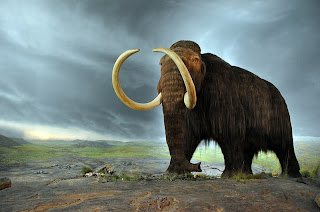
Image credits: Wikimedia
Recent projects on mammoth
This most recent initiative, led by Russia’s State Research Centre of Virology and Biotechnology (Vector), aims to collect cellular material holding the viruses that killed these frozen viruses and bring it back to the lab for testing. For a complete understanding of the potential risk, we’ll have to look into the history of vectors.
History of vectors in Russia
The resultant anthrax infection killed at least 66 people, despite Soviet authorities denying the incident for years.
Image credits: Pixabay
Soon after, 72 members from a nomadic reindeer herder village, including 41 children, were hospitalized with illnesses. Viruses derived from these leftovers can subsequently infect groundwater, which people drink. A Siberian child who died in 2014 did have an intestinal type of disease, which produces fever, stomach aches, diarrhea, and vomiting at first.
Potential upcoming risks
Since these viruses and bacteria initially evolved to live inside warm bodies, some experts believe they would not have been able to survive being frozen for many years. Scientists from the U.S. National Academies of Sciences, Engineering, and Medicine convened in 2019 for a special meeting to investigate the threat of lethal microbes emerging from our planet’s melting ice.
How did scientists find this “zombie virus”
Russian scientists experimenting with long-dormant mammal-infecting viruses have alarmed international experts such as Jean-Michel Claverie, a professor at the microbiology department at the France’s University of Aix-Marseille.
Claverie claimed last month that his team had revived a Siberian ‘zombie’ virus. This had been frozen beneath a lake bed for about 50,000 years.
Why is the looming threat of a zombie virus pandemic?
Floodwaters from melting ice damage river banks where tribes bury their dead. The zombie anthrax spores are emerging from such skeletal remains.
According to Alexey Kokorin, head of the World Wildlife Fund’s climate and energy programme in Russia, “anthrax spores can live in frozen human and animal carcasses for hundreds of years before being discharged.”




2 comments
[…] DNA of well-preserved wooly mammoth tissue found in Alaska and Siberia, along with DNA from elephants, scientists can pinpoint the gene sequences that provide cold […]
[…] DNA of well-preserved wooly mammoth tissue found in Alaska and Siberia, along with DNA from elephants, scientists can pinpoint the gene sequences that provide cold […]